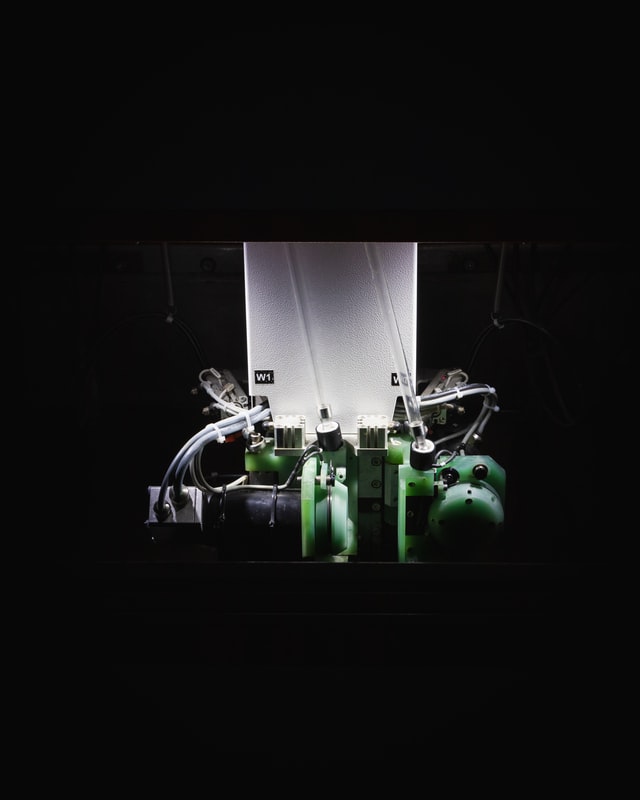
While the early concept of electrical discharge machining (EDM) dates back to the 18th century, modern EDM began in the 1960s with the emergence of the first wire electrode machines. Since then, EDM technologies have continually evolved to allow skilled craftspeople to machine precise and complex shapes that would otherwise be difficult to produce with conventional tools.
This article will explain the difference between the two highly specialized and distinct EDM processes: wire and ram EDM. We’ll highlight the unique functions and benefits of ultra-precision manufacturing applications in mission-critical industries, such as aerospace, medtech, defense, high-tech, and space exploration.
Wire EDM
Wire EDM submerges the part in deionized water, and the wire acts as an electrode while the workpiece acts as a second electrode. The wire EDM machining process uses spark erosion to cut the material. When the current discharges or sparks between the two electrodes, the spark roughs or skims the part without the wire ever contacting its surface. An automatic wire feed protects the wire from wear and ensures consistent cutting for accurate repeatability. Water flushes debris away throughout the process to help machine operators determine the ideal maximum feed rate for the material.
This advanced machining process removes excess material without a strong cutting force, places little to no heat stress on the component, and reduces the risk of distortion on the part’s surface, making it ideal for intricate parts and specific cuts.
Today’s state-of-the-art wire EDM machines are suited for many ultra-precision applications, allowing us to achieve:
- Envelope up to 41.3” x 31.5″ x 11.86″
- Near-zero tolerances
- Finishes to 4 RMS
Advanced wire EDM technologies are ideal for challenging and time-sensitive component manufacturing applications of all sizes, including prototypes and full production runs.
Next, we’ll explore ram EDM and how it differs from wire EDM.
Ram EDM
Like wire EDM, ram EDM also uses a spark erosion technique, and the application material submerges in liquids. However, instead of a wire acting as an electrode, ram EDM uses a different conductive metal to serve as the second electrode. Ram EDM operators connect the electrode to a power supply to generate electrical potential between the electrode and part, triggering a plasma channel and spark jumps.
As sparks form, the application material erodes in a distinct shape as the electrode sinks into the workpiece to create a negative shape impression or mold. Ram EDM is beneficial for making dies, molds, and manufacturing various mission-critical components with exacting precision.
Our industry-leading ram EDM machines can achieve:
- Fine finish performance to 4 RMS
- 0.0002” tolerance
- Thin walls/deep cavities
Our ram equipment also features EDM drilling capabilities and hex, Torx, clover, and other socket features for high-precision parts, including surgical devices and implants.
Is Wire or Ram EDM best for your high-precision project?
Under the direction of a highly skilled operator, both wire and ram EDM allow you to design and cut complex shapes accurately, pushing the boundaries of what’s possible. However, each specialized process has distinct advantages and considerations, and determining the best choice depends on your project’s unique specifications and requirements. As wire and ram EDM experts, let us help you make the right decision for your application. We blend talent, passion, and technology to bring your mission-critical component to life.